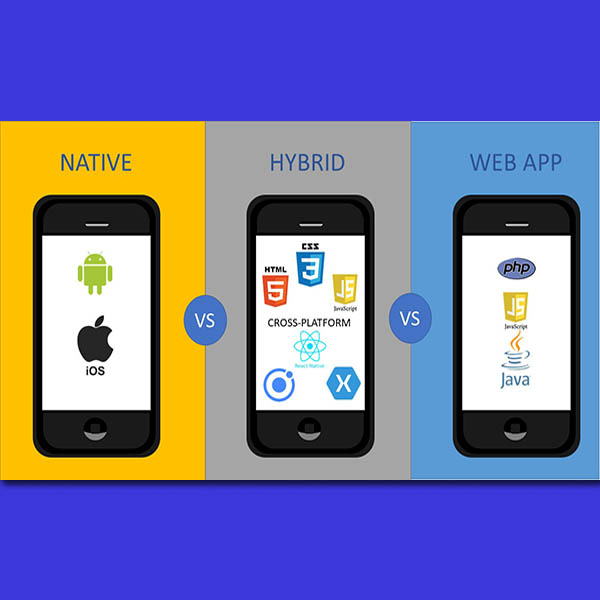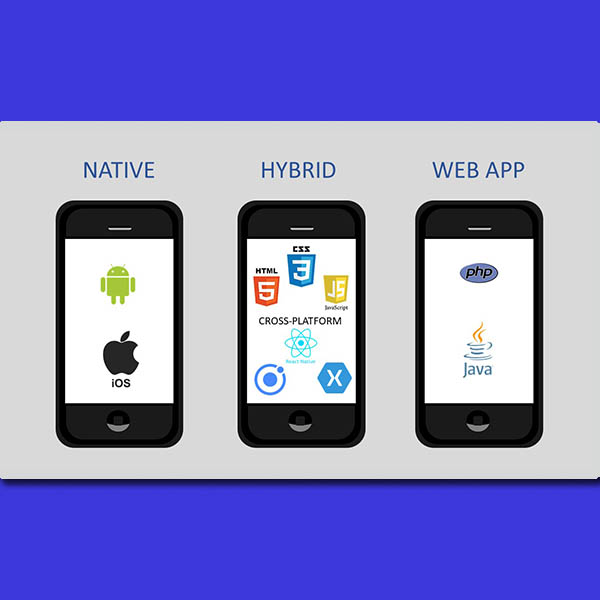
Comparison among Native Hybrid and Web Apps
Comparison among Native, Hybrid and Web App Development
| NATIVE | HYBRID | WEB | |
| DEVELOPMENT COST | Usually higher than hybrid or web, if apps are developed for multiple platforms | Commonly low cost, but require high skills for hybrid tools | The lowest cost due to a single code base |
| PERFORMANCE | Native code has wide access to device functionality, while content, structure and visual elements are also stored in device memory ready for instant use. | Apps content is only a wrapper on the user device while most of the data should be loaded from a server. | Performance is inextricably linked due to browser work and network connection |
| DISTRIBUTION | App stores allow some of the marketing benefits (such as rankings and feature placements) while they have their own requirements and restrictions | App stores allow some of the marketing benefits (such as rankings and feature placements) while they have their own requirements and restrictions | There are no store restriction to launch, but there is also no app store benefits |
| MONETIZATION | Both apps may content in-app purchases, ads, and app purchase itself. However, app stores take a fee (around 30%) from all purchase actions, also there is an initial fee to deploy an app in the app store | Both apps may content in-app purchases, ads, and app purchase itself. However, app stores take a fee (around 30%) from all purchase actions, also there is an initial fee to deploy an app in the app store | Monetization may be mostly provided via advertisements or subscriptions. |
| TRENDS | According to Flurry analysis, users spend up to 86% of their mobile time using native or hybrid apps (still 54% if exceeding games from rating) | According to Flurry analysis, users spend up to 86% of their mobile time using native or hybrid apps (still 54% if exceeding games from rating) | Only up to 14% of time users spend on mobile websites |
| DEVICE FEATURES | Native platform code has wide access to any device APIs | Some APIs benefits are close to hybrid apps, however, there are still some that can be used of low-level features (such as gyroscope or accelerometer) | Only some of device APIs may be used (such as geolocation) |
| USER INTERFACE | Apps developed with highly familiar and original UI to native OS | Even best apps can’t give to a user fully native experience due to cross-platform UI and UX design, but meanwhile, they can achieve a fair native look | Even best apps can’t give to a user fully native experience due to cross-platform UI and UX design, but meanwhile, they can achieve a fair native look |
| CODE PORTABILITY | Commonly code for one platform can’t be used for another | Most of hybrid codebase tools can be ported to major platforms | Browser and performance is only a case |
| MAINTENANCE / UPDATE | Maintenance of app will be as much higher, as much platforms it is developed for | As far as there is only one codebase to be maintained or updated all actions are much easier and fast | As far as there is only one codebase to be maintained or updated all actions are much easier and fast |
| RECOMMENDED FOR | Applications that will be developed for single platforms, apps with wide requirements due to capabilities of hybrid or web, Anything that requires highly optimization level for stable work, apps that need best native UI or best graphics animation | Applications that need to be distributed as multi-platform, Those apps that will be developed for App Stores | Applications with limited funds, resources or terms, Apps that do not require App Stores, Developed with HTML, CSS, JavaScript etc |


